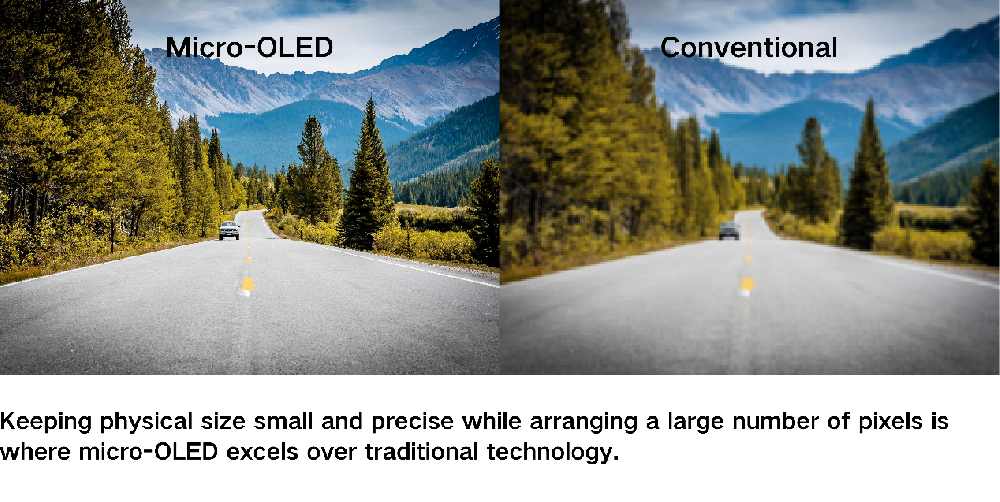Time:2024-05-08 11:18:16
Definition - OLEDoS
OLEDoS stands for OLED on Silicon, which refers to OLED technology using single-crystal silicon as the substrate.
What is OLED?
OLED stands for Organic Light-Emitting Diode, which is a display technology that uses organic materials to generate light. Unlike traditional LCD technology, OLED has self-emitting properties, where each OLED pixel can independently emit light without the need for a backlight source.
Due to the independent control of each pixel, OLED can achieve high contrast and true black. When a pixel does not need to emit light, the current can be turned off, completely extinguishing brightness. This is different from LCD displays that require a backlight source to control light transmission.
However, unlike traditional TFT-OLED displays, OLEDoSs utilize single-crystal silicon as the substrate, incorporating CMOS drive circuits within the single-crystal silicon.
OLEDoS places the pixels directly on a silicon wafer instead of a glass substrate, allowing for smaller pixel sizes and higher pixel density. Typically, conventional displays have pixel densities of a few hundred pixels per inch, while OLEDoS can achieve high pixel densities of thousands of pixels per inch.

Form - Micro-OLED
In terms of form, OLEDoS is a type of OLED microdisplay, hence referred to as micro-OLED in the industry.
Compared to common large-size display panels like LCD, OLED, and LED, microdisplays are a special product form with screen diagonal sizes typically less than 40mm.
The physical size of microdisplays is usually small and not suitable for direct viewing. However, they can be utilized to form large-screen displays through optical systems, making them widely used in areas such as projectors and near-eye displays.
Application - Near-Eye Display
Micro-OLED retains many advantages of OLED displays and has the potential for higher resolution than traditional OLED, making it suitable for applications distinct from traditional OLED used in smartphones.
In our daily use, smartphones and TVs have clear displays without any issue, indicating they have decent resolutions. So why is there a need to seek higher pixel density display technology for near-eye displays?
The key lies in the phrase "near-eye."
In daily life, we may notice that screens with lower resolutions appear clearer when viewed from a distance. However, bringing the eyes close to the screen can reveal pixel boundaries because the number of pixels in the field of view decreases as the distance shortens.
For standard smartphone and TV viewing, the screen is usually viewed from a distance where display technologies with typical pixel densities can provide sufficient clarity. However, when using the same display panel for near-eye displays, the closer the eyes are to the screen, the fewer pixels in the field of view, making individual pixels more distinguishable and causing the screen to appear "blurry." This is when the display must have the ability to significantly reduce pixel sizes within a tiny physical space, allowing more pixels to be packed into the limited area. As a result, when the eyes are close to the screen, there are enough pixels in the field of view to ensure a clear image. This is where micro-OLED displays replace LCD microdisplays.
In addition, from a visual perspective, the human eye's resolution is not constant but rather influenced by ambient brightness. Resolution decreases in low light conditions, while excessively high brightness can cause glare and is not necessarily better. The eye's ability to resolve details is also related to the relative contrast of the observed objects; when the relative contrast is low, and the brightness of the object and the background are too similar, the eye's resolution decreases.
Therefore, micro-OLED displays can provide higher pixel density, appropriate brightness, and contrast for the main display of headsets. This enhancement improves visual clarity and enhances immersive experiences, making them the mainstream choice in near-eye display technology.